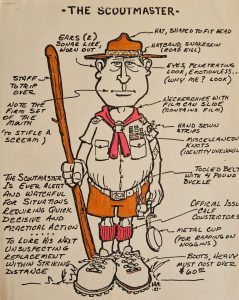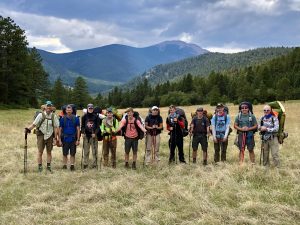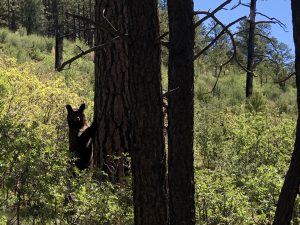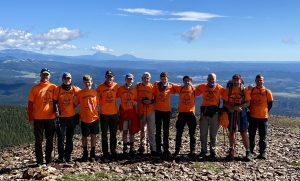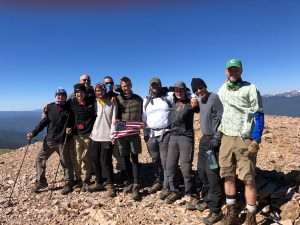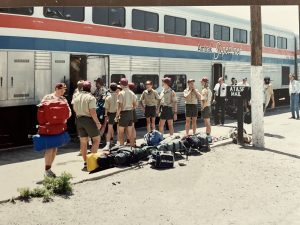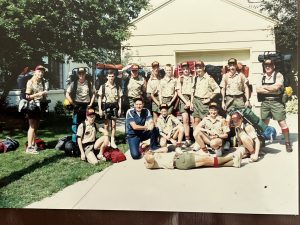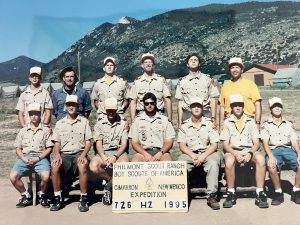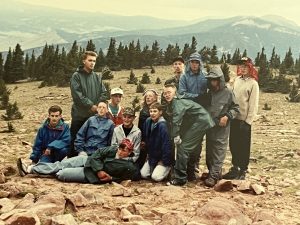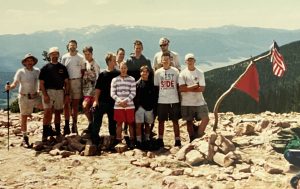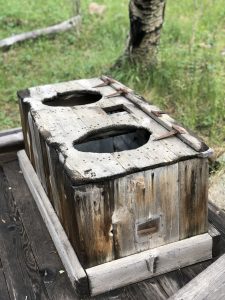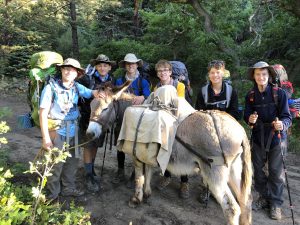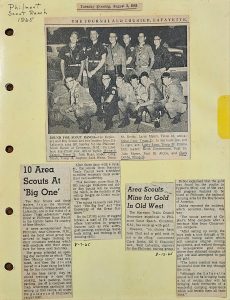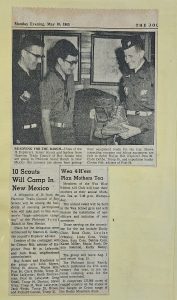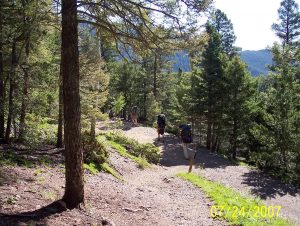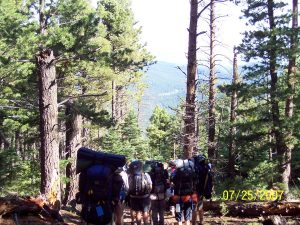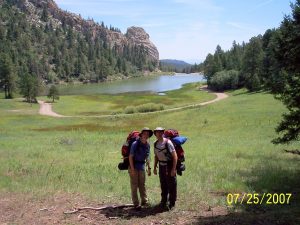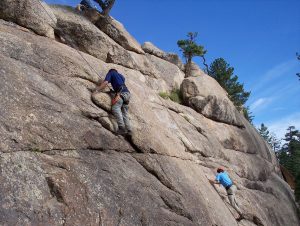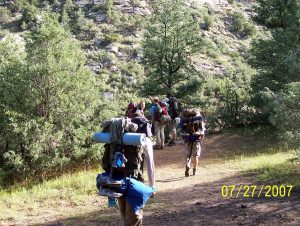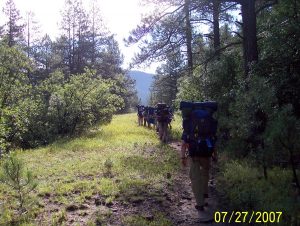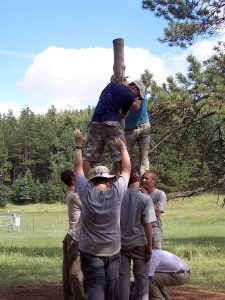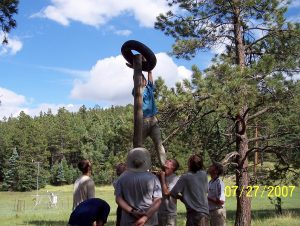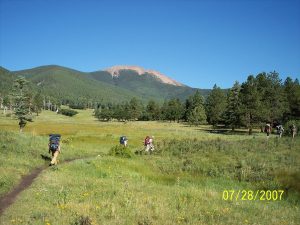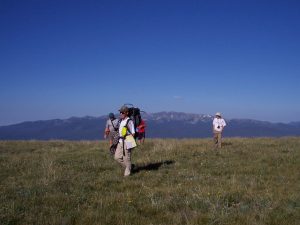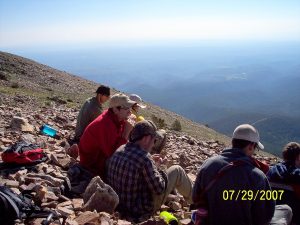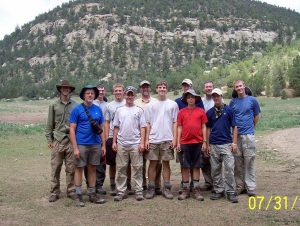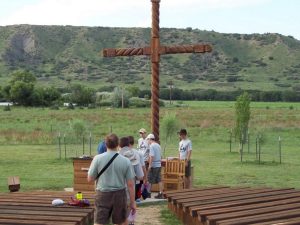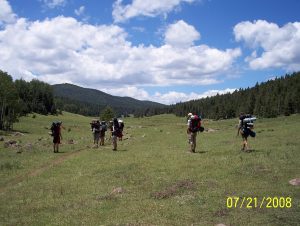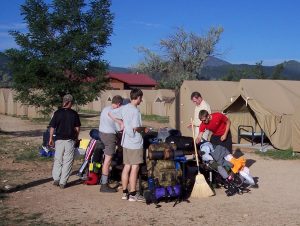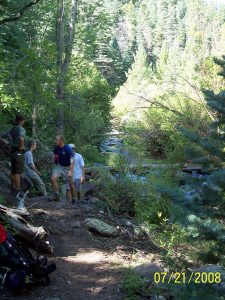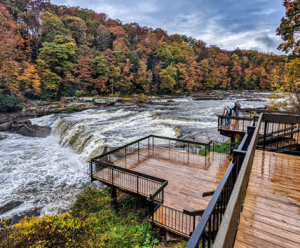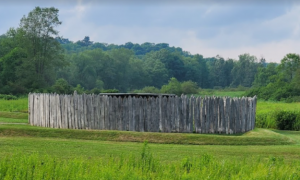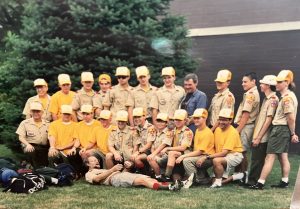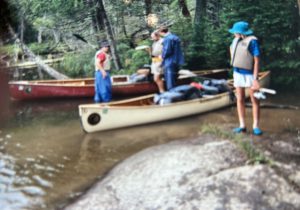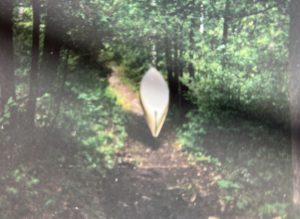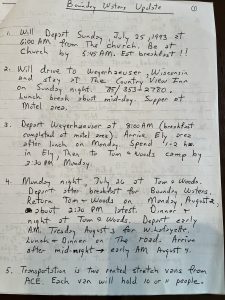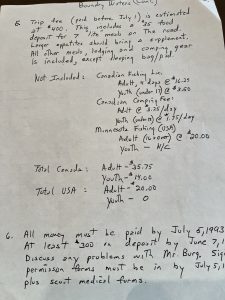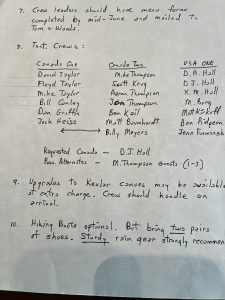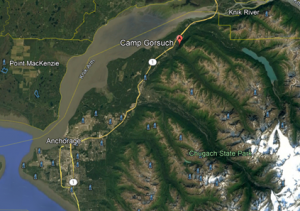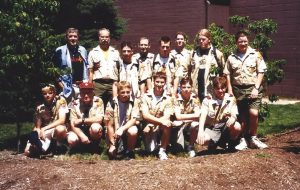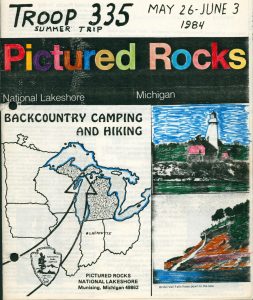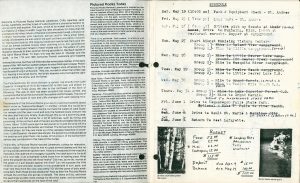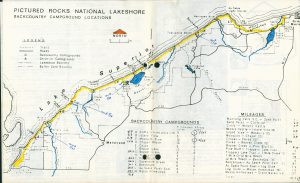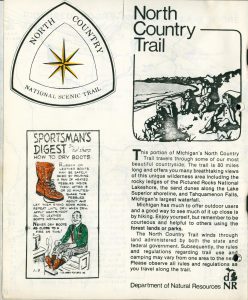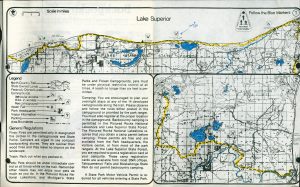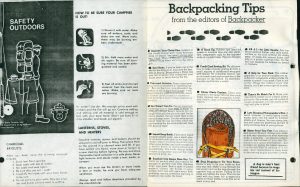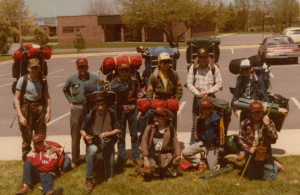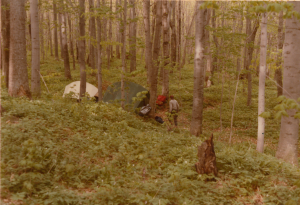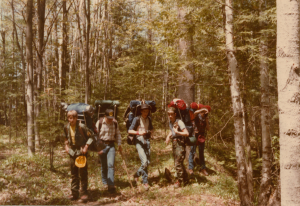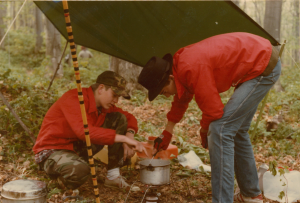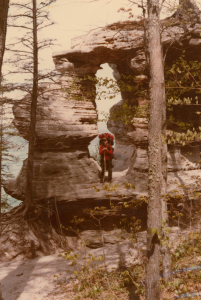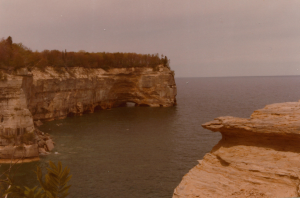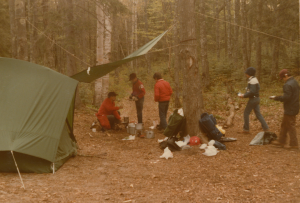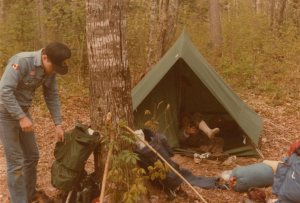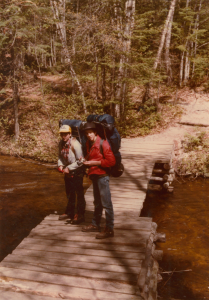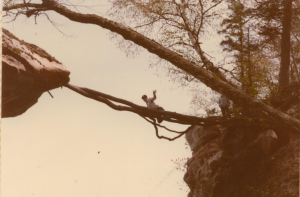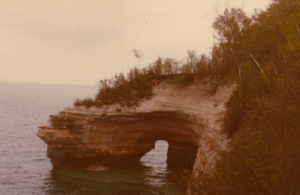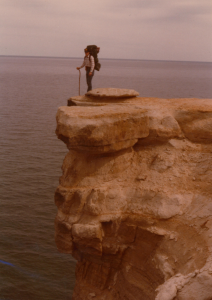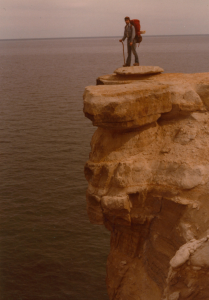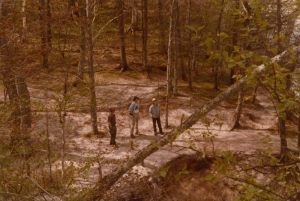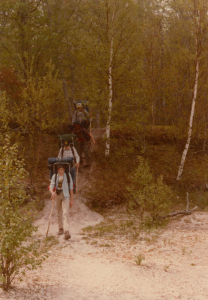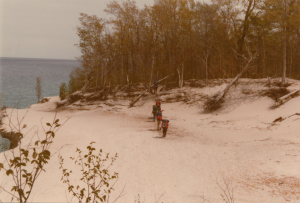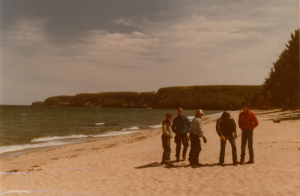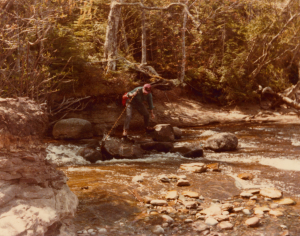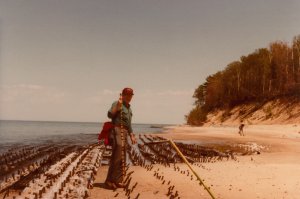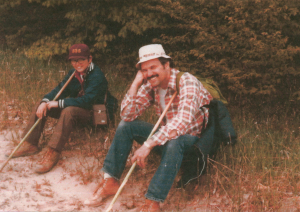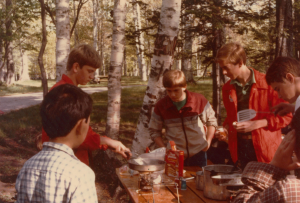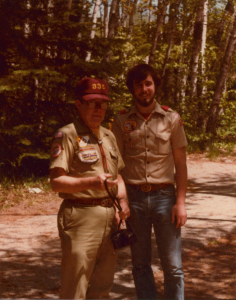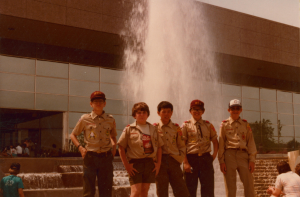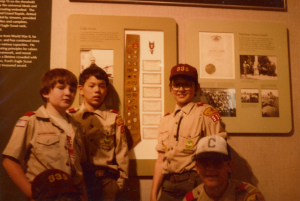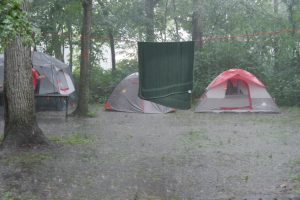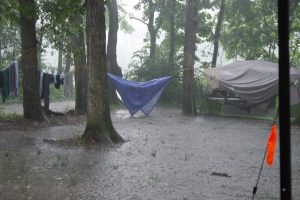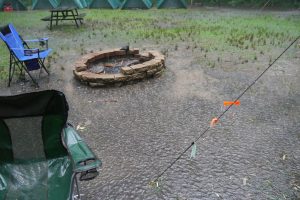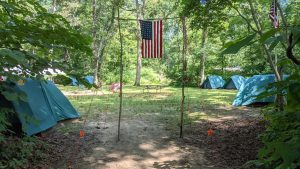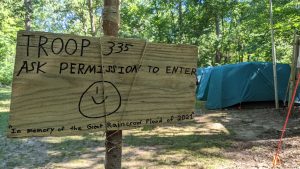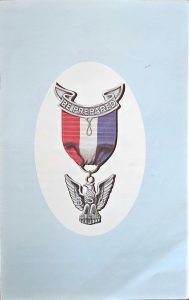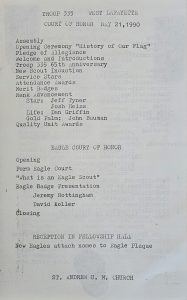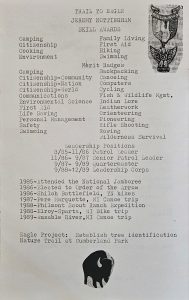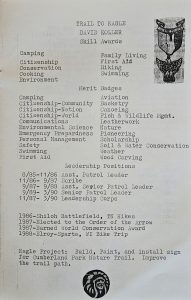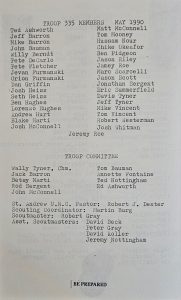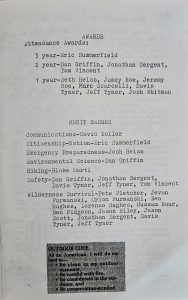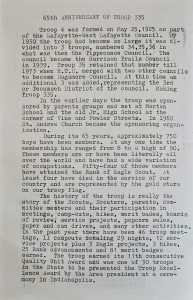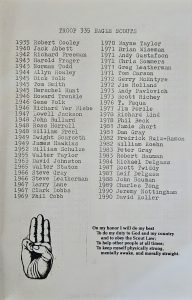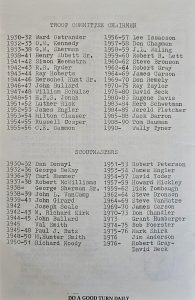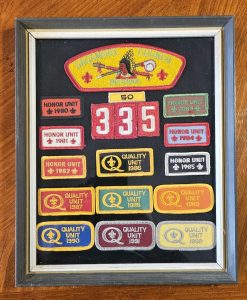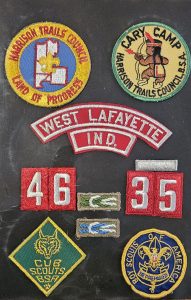Every troop has a Scoutmaster: an adult leader who is responsible for working directly with scouts, providing direction, coaching, and support. They provide youth leaders with the tools and skills they need to run the troop, and they serve as role models and mentors.
This canonical list of Troop 335 scoutmasters was produced from troop records, which had some gaps that were filled from the programs of the 50th and 65th anniversaries as well as recollections of living scouters, in particular for the 1990s and 2000s. The names of our scoutmasters from the first five years of our troop are lost to time, unfortunately.
Troop 335 owes a debt of gratitude to these men who volunteered their time in service of the development of our scouts and the leadership of our troop over the course of the last century.
| 1930-1931 | Daniel Denuyl |
| 1931-1932 | Daniel Denuyl |
| 1932-1933 | Henry G. Dekay |
| 1933-1934 | Henry G. Dekay |
| 1934-1935 | Henry G. Dekay |
| 1935-1936 | Henry G. Dekay |
| 1936-1937 | Carl Hammer |
| 1937-1938 | Hammer / Robert C. McWilliams |
| 1938-1939 | George W. Sherman Sr. / John L. VanCamp |
| 1939-1940 | John P. Girard |
| 1940-1941 | John P. Girard |
| 1941-1942 | Joseph J. Seale |
| 1942-1943 | Seale / W. Richard Kirk |
| 1943-1944 | Kirk / John Bullard |
| 1944-1945 | Bullard / Val Smith |
| 1945-1946 | Paul J. Butz |
| 1946-1947 | Paul J. Butz |
| 1947-1948 | Paul J. Butz |
| 1948-1949 | M. Hunter Smith |
| 1949-1950 | M. Hunter Smith |
| 1950-1951 | Richard Moody |
| 1951-1952 | Robert Peterson |
| 1952-1953 | Robert Peterson |
| 1953-1954 | Dr. James E. Engler |
| 1954-1955 | David S. Yoder |
| 1955-1956 | David S. Yoder |
| 1956-1957 | David S. Yoder |
| 1957-1958 | Howard A. Mickley |
| 1958-1959 | Howard A. Mickley |
| 1959-1960 | Mickley / Dick Tombaugh |
| 1960-1961 | Dick Tombaugh |
| 1961-1962 | Dick Tombaugh |
| 1962-1963 | Steve Bronson |
| 1963-1964 | Steve Bronson |
| 1964-1965 | Stephen VanMatre |
| 1965-1966 | Stephen VanMatre |
| 1966-1967 | Stephen VanMatre |
| 1967-1968 | Stephen VanMatre |
| 1968-1969 | Stephen VanMatre |
| 1969-1970 | James R. Carson |
| 1970-1971 | Don Chandler |
| 1971-1972 | Don Chandler |
| 1972-1973 | Don Chandler |
| 1973-1974 | Grant Humbarger / Robert Forester |
| 1974-1975 | Robert Foerster |
| 1975-1976 | Mark Shirk |
| 1976-1977 | Shirk / Jim Anderson |
| 1977-1978 | Bob Gray |
| 1978-1979 | Bob Gray |
| 1979-1980 | Bob Gray |
| 1980-1981 | Bob Gray |
| 1981-1982 | Bob Gray |
| 1982-1983 | Bob Gray |
| 1983-1984 | Bob Gray |
| 1984-1985 | Bob Gray |
| 1985-1986 | Bob Gray |
| 1986-1987 | Bob Gray |
| 1987-1988 | Bob Gray |
| 1988-1989 | Bob Gray |
| 1989-1990 | Bob Gray |
| 1990-1991 | Bob Gray |
| 1991-1992 | Bob Gray |
| 1992-1993 | Bob Gray / Martin Burg |
| 1993-1994 | Martin Burg |
| 1994-1995 | Martin Burg |
| 1995-1996 | Martin Burg |
| 1996-1997 | Martin Burg |
| 19971998 | Martin Burg |
| 1998-1999 | Martin Burg |
| 1999-2000 | Martin Burg / Bill Hoover |
| 2000-2001 | Bill Hoover |
| 2001-2002 | Andrew Hurt |
| 2002-2003 | Hurt / John Maxwell |
| 2003-2004 | Maxwell / Chris Hilgendorf |
| 2004-2005 | Chris Hilgendorf |
| 2005-2006 | Chris Hilgendorf |
| 2006-2007 | Chris Hilgendorf |
| 2007-2008 | Chris Hilgendorf |
| 2008-2009 | Gregory Potts |
| 2009-2010 | Gregory Potts |
| 2010-2011 | Sam Midkiff |
| 2011-2012 | Sam Midkiff |
| 2012-2013 | Darrell Clase |
| 2013-2014 | Darrell Clase |
| 2014-2015 | Darrell Clase |
| 2015-2016 | Pat Jarboe |
| 2016-2017 | Pat Jarboe |
| 2017-2018 | Pat Jarboe |
| 2018-2019 | Pat Jarboe |
| 2019-2020 | Richard McClurg |
| 2020-2021 | Richard McClurg |
| 2021-2022 | Pat Jarboe |
| 2022-2023 | Pat Jarboe |
| 2023-2024 | Bryan Shaffer |
| 2024-2025 | Bryan Shaffer |
At our centennial Court of Honor on Monday, we are looking forward to reconnecting with ten of our past scoutmasters. Each will offer a “Scoutmaster Minute” with a few words of wisdom and shared memories of scouting in Troop 335.

